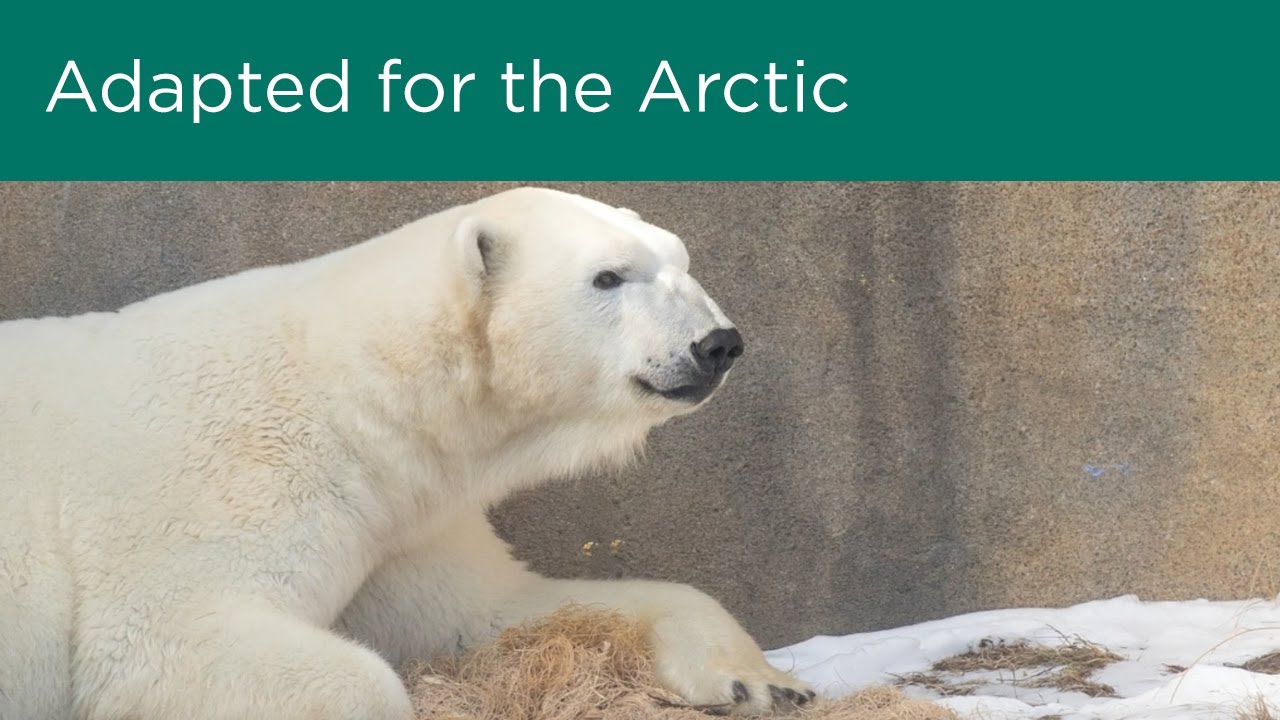*****
Summary of Transcript:
The video is about polar bears, specifically the two that live at Lincoln Park Zoo. The video goes through polar bears’ adaptations to survive in the Arctic ecosystem, including a thick layer of fur, fat, short extremities, and large paws. Polar bears rely on a diet of blubber-rich seals, and the melting sea ice due to rising temperatures is a major threat to their survival. The video concludes by highlighting the importance of taking action to address climate change and protect the Arctic ecosystem.
*****
Summary of Description:
The article shares information about polar bear adaptations, including their large paws and small ears and tails, that help them thrive in their arctic environment. It also encourages readers to help stop melting sea ice and suggests bundling up like a polar bear when exploring winter environments. The content was produced and illustrated by Sean Raju, Ashley Bedore, and Nicole Hodur, with photos and videos by Julia Fuller, Chris Bijalba, and Mike Murray, and trademarked by Lincoln Park Zoo.
*****
Adaptation of Polar Bears: Thriving in the Arctic Environment
Polar bears are mesmerizing creatures that have caught the attention of several people worldwide. With their massive paws that measure as big as dinner plates, tiny ears, and tails, these creatures are the largest predatory animals that roam the Arctic. In this article, we will explore the adaptations of these incredible animals that enable them to thrive in their environment.
Polar Bears: Lords of the Arctic
The Arctic region is one of the harshest environments on the planet. The frozen landscape, icy waters, and piercing cold temperatures make survival daunting. However, polar bears are lords of this environment. Several adaptations enable them to survive and thrive in such a challenging environment.
Polar Bear Paws: More Than Just Large
Beneath a polar bear’s thick, white fur are the most remarkable adaptations that aid its balance and movement. Polar bear paws have hair and thick pads that act as insulation, protecting them from the cold, icy ground. These paws are also webbed, allowing the polar bears to swim at a speed of six miles per hour, making them incredibly agile swimmers.
Tiny Ears and Tails: A Masterpiece of Adaptation
Polar bears have small ears and tails compared to their body size. Although this may seem counterintuitive, this unique adaptation helps them retain heat by minimizing their surface area. Unlike humans or animals, polar bears lose minimal heat through evaporation, making them superb survivors in freezing temperatures.
Blubber: A Winter Coat that Keeps Them Warm
Polar bears are covered in thick fat, which acts like a winter coat that keeps them warm despite the frigid conditions. This fat also serves as a source of energy, providing them with the insulation and warmth they need to thrive in their arctic environment.
Melting Sea Ice: Threat to Polar Bears
Despite the excellent adaptation, polar bears face several threats, the most significant being melting sea ice. Polar bears rely on sea ice to hunt for their prey, but the melting ice has dramatically reduced the surface area, making it difficult for them to find food. If the trend continues, polar bears may struggle to find sufficient food to survive, leading to their extinction.
How to Help Stop Melting Sea Ice
As humans, we play a critical role in preserving the environment that polar bears and other creatures rely on for survival. We can reduce our carbon footprint, which contributes to global warming, by using public transportation, eating less meat, using energy-efficient appliances, and planting trees.
Conclusion
Polar bears are incredible creatures, with remarkable adaptations that enable them to thrive in the harshest environment on the planet. Their unique physique, characterized by massive paws, small ears, and tails, acts as protective gear, insulation, and energy sources that aid their survival in the cold, icy tundras. However, without action towards saving the environment, the melting sea ice remains the biggest threat to their survival. We must take action to reduce our carbon footprint to help preserve the Arctic’s ecosystem, allowing these majestic creatures to thrive in their natural habitat.
*****
Source Description
Polar bears’ paws are as big as dinner plates but have tiny ears and tails. Discover how these adaptations help these incredible bears thrive in their arctic environment and how you can help stop melting sea ice. Are you ready to explore the wintery outdoors? Be sure to bundle up like a polar bear!
Video Producer/Editor: Sean Raju
Illustration: Ashley Bedore and Nicole Hodur
Photo and Video: Julia Fuller, Chris Bijalba, Mike Murray
Trademark: Lincoln Park Zoo, all rights reserved


